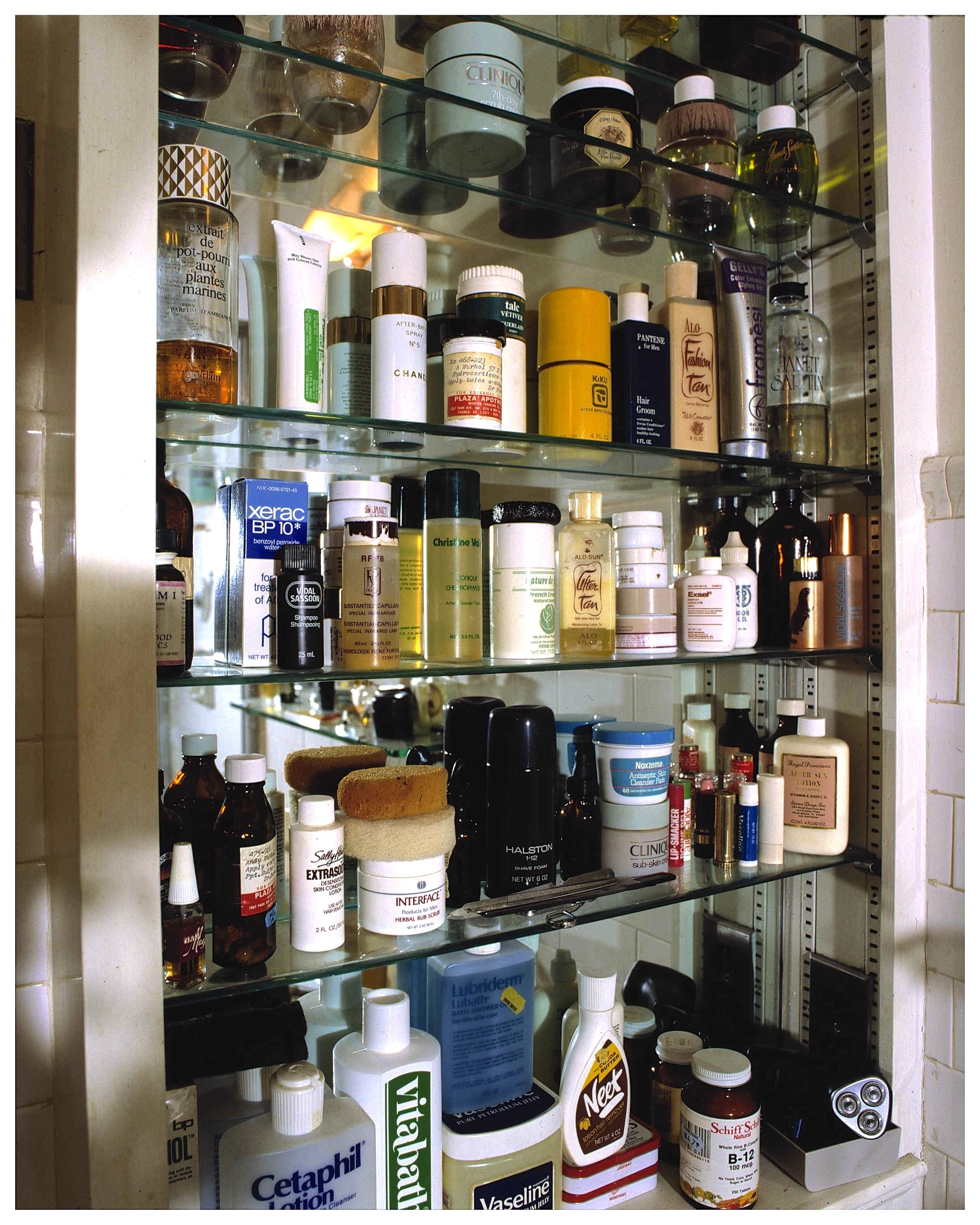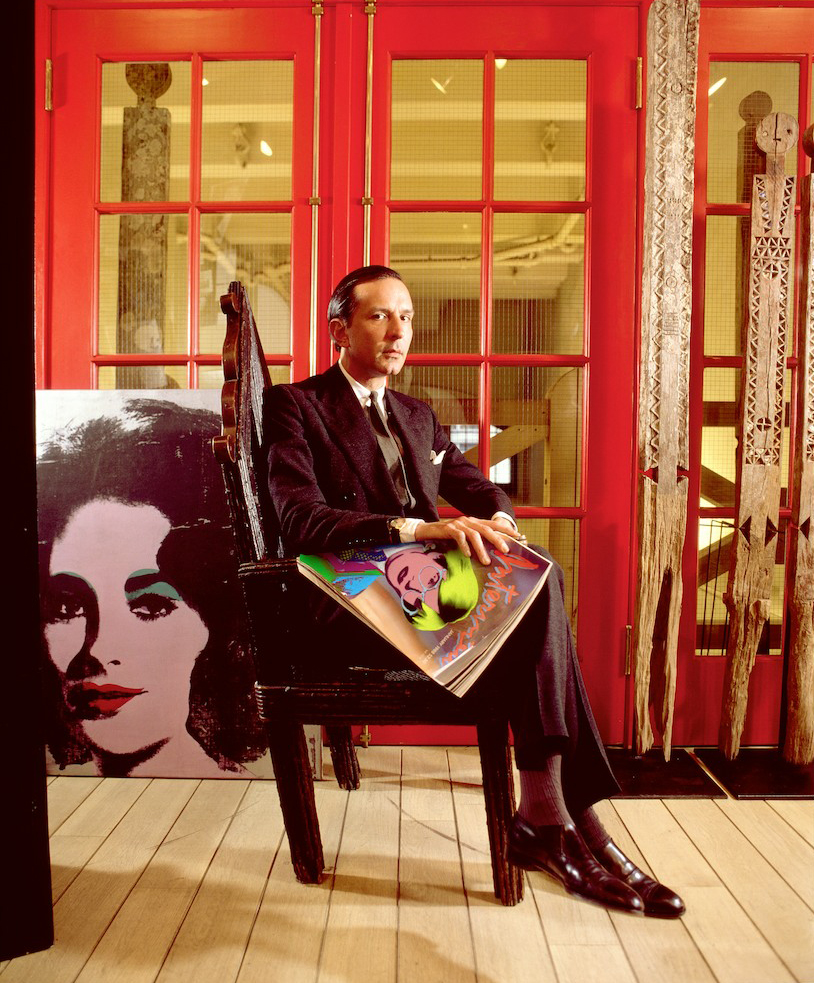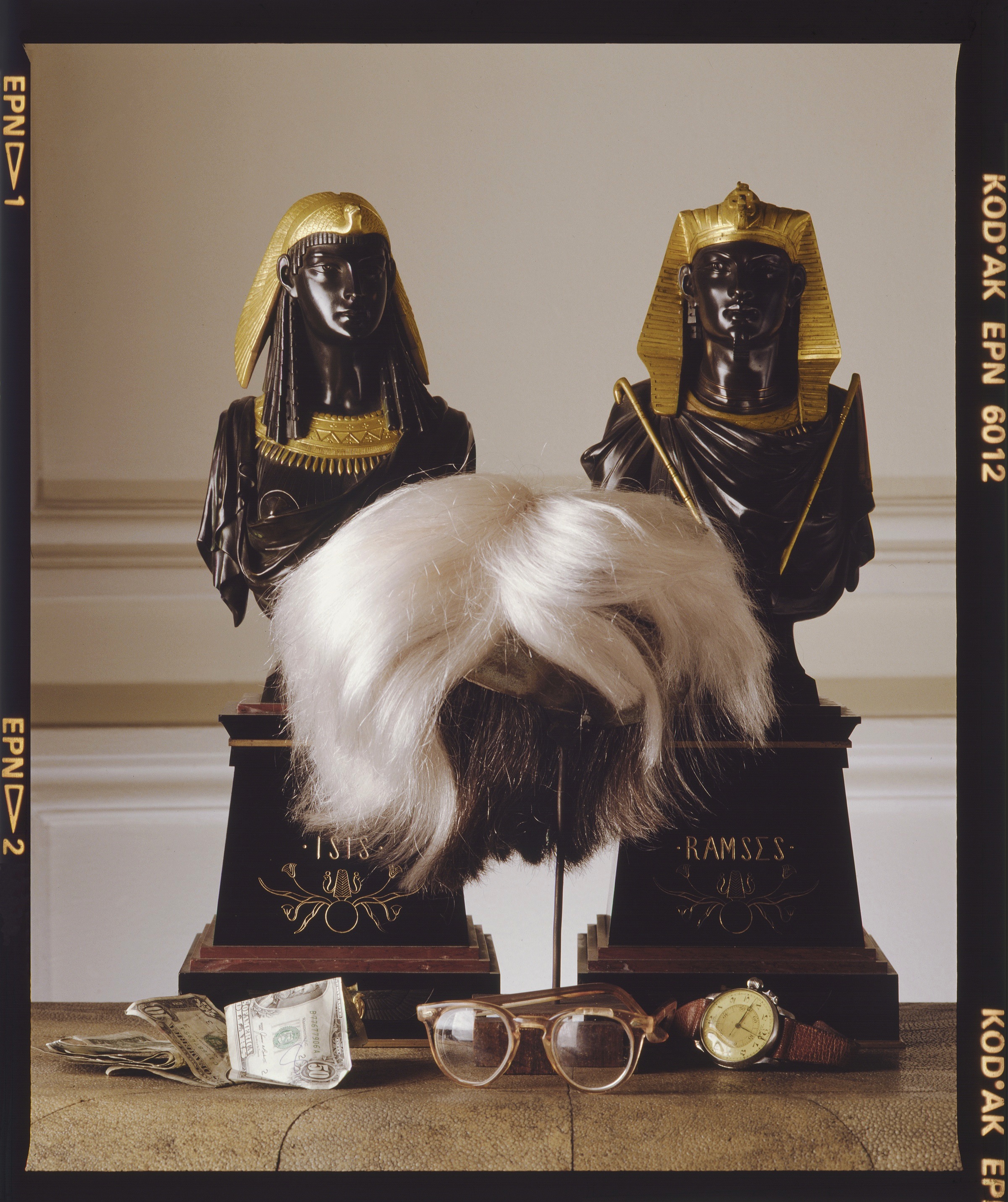DAVID GAMBLE | WARHOL REMEMBERED
In the weeks following Andy Warhol’s sudden death in 1987, photographer David Gamble was asked by Warhols’ mephistophelean manager Fred Hughes - whose portrait sitting in The Factory with the Elizabeth Taylor painting is a key work in the series - to photograph the very private sanctuary of the artist’s New York Townhouse and ‘The Factory’.
Through eight days Gamble photographed Andy Warhol’s rooms, closets, shoes, clothing as well as jewellry and wigs loaned back specially by the Warhol Foundation to depict an indirect, yet deeply intimate portrait of a mysterious life defined by art, fame and wealth.
From the medicine cabinet, filled with products testifying to Warhol’s reputation as a world-class hypochondriac and which Gamble feels was “the closest I came to photographing Andy through his objects” to the decidedly dreary kitchen and empty chair, reflecting the earlier loss of his mother who had lived with him until her death in 1972.
Significant in this series is the final soup can Warhol consumed prior to his routine gallbladder surgery. The Can is photographed in The Kitchen and then re-photographed in Gamble’s studio in 1997 as it continued to deteriorate. The Campbell’s Soup Can being critical to Warhol’s life - both in his work and in his claim that he ate it every day for 20 years. As the critic Robert Hughes stated in 1971 ‘’Painting a soup can is not in itself a radical act...But what was radical in Warhol was that he adapted the means of production of soup cans to the way he produced paintings, turning them out en masse - consumer art mimicking the the process as well as the look of consumer culture.’’
In photographing this portrait series, Gamble’s sense of something being unresolved, in both Warhol’s sudden and shocking death and in the assignment feeling incomplete, was resolved by superimposing a silk-screen spectre of Warhol upon the scenes. Working with Adplates’ technicians using a Quantel Paintbox computer system, the photographer conjured images of Warhol to haunt the photographs of his living spaces. Two-dimensional reconstructions of the pop artist sit ill-at-ease in the Art Deco room and on an Egyptian throne in the parlour. His face has even mysteriously etched itself on to the cover of the magazine that Hughes holds in his hands and which, on the original, remained unhelpfully blank.
ABOUT DAVID GAMBLE
Born in London and now in New York, David Gamble is a photographer and painter of international acclaim. Winner of the Grand Prix European Award, Best Photographer in Europe, Arles, France 1987, the World Press Award Holland (1988, 2nd prize, Science & Technology) for his portrait of Stephen Hawking, which was used as the cover for Hawking’s crucial book A Brief History of Time, and The American Photography Award (1989). Working throughout the 80s/early 90s for Observer Magazine, Independent, Sunday Times, Telegraph, Traveller Magazine, Time-Life, Fortune (NY), Paris Match, The New Yorker, Newsweek (NY), his back-list is a who’s who in pictures: every shot a winner, every detail sharp yet subtle. His photographs are in major institutions including the The National Portrait Gallery UK, The National Portrait Gallery at the Smithsonian and the Warhol Museum Pittsburgh. An important exhibition of his Andy Warhol photographs toured the USA and Scandinavia in 2011.





